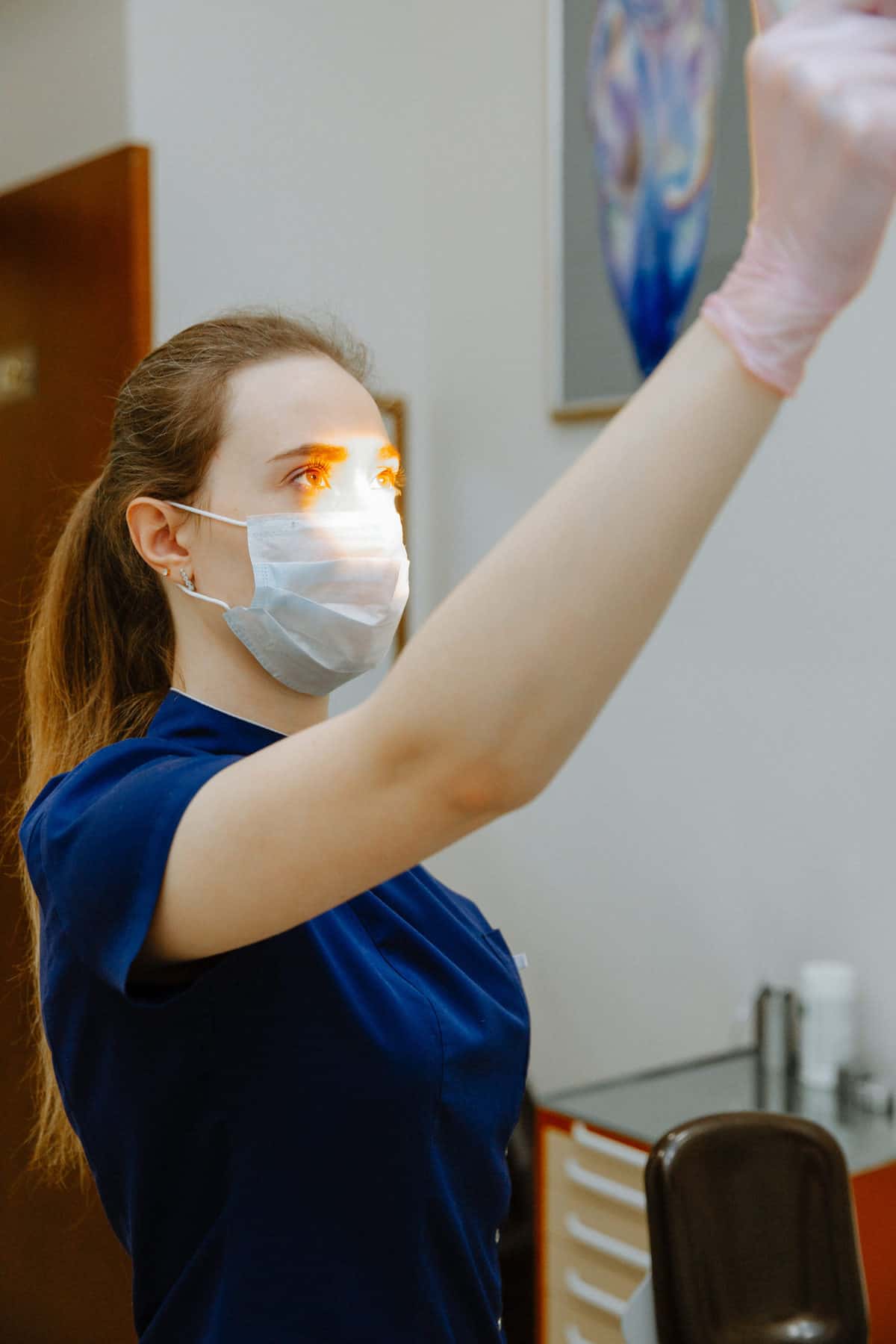Healthcare: How Lighting Supports Medical Staff and Patients
Published April 2020

Does Lighting Really Impact Human Health?
It’s no secret that lighting has proven positive effects on mental health, productivity and impacts the human circadian rhythm, sleep patterns and even mental alertness.
Even more importantly, proper lighting in healthcare facilities has proven to reduce patients length of stay, decrease depression and even dementia in some patients, and supports the circadian rhythm and mental health of healthcare workers working long or overnight shifts.
Circadian System
Tunable lighting, or lighting that you can customize or program to display your desired light levels and color tones, has been widely utilized and studied in healthcare settings, specifically hospitals, treatment facilities, and senior care facilities. Light plays a key role in setting and regulating the body’s biological clock.
- Hormone Function: Both the intensity and color of light can be used to suppress or stimulate the secretion of melatonin and other hormones in the body that in turn affect our mood, alertness and health.
- Correct Biological Clock Misalignment: In some studies, tunable lighting has been used by medical professionals to treat jet lag, sleep disorders, and other conditions.
Medical Staff
Now more than ever we are turning to medical teams across the world to to perform their duties to the best of their abilities. There is strong evidence that specific lighting can be extremely beneficial to patients as well as staff in healthcare settings. Adequate lighting conditions are essential for performance of visual tasks by staff in hospitals, and poor lighting conditions can result in errors.
- Light and Worker Stress: Improper lighting controls can leave surgeons with lighting difficulties during surgeries, nurses feeling exhausted, and anesthesiologists feeling stressed. Proper exposure to bright light, cool light or a specific lighting schedule can significantly reduce the perception of stress and burnout.
- Long Hours and Overnight Shifts: Dim light conditions during night shifts can make patient care and decision making more difficult. Night shift workers experience an inverse relationship between light levels and eye fatigue. Tunable lighting allows for 1 touch custom-control for every type of shift or job function in every type of facility.
- Energy Usage: The demanding EUI (Energy Use Intensity) of healthcare facilities, and the rapidly aging population, indicates that energy use for healthcare will continue to increase in the U.S., as the increased demand for healthcare drives a need for new or renovated facilities. Installing Tunable Lighting in healthcare facilities improves system efficiencies, saving energy and increasing or improving existing light levels. For example, a nurse station in a senior care facility reduced their input power for each luminaire from 90 to 24 W, yielding a 73% annual energy savings for the same operating hours.
Patient Care
There is strong evidence that shows certain lighting can help reduce depression, alleviate pain, and improve sleep and circadian rhythms among patients, and thus supports the healing process. It is important for facility designers and facility managers in healthcare settings to fulfill human needs for light and provide high-quality lighted environments that support the custom needs of each space.
- Senior Care: Concerns about possible suppression of melatonin and general sleep disruption are heightened at senior care facilities in particular, and tunable white LED lighting systems provide technology that addresses a range of visual and non-visual needs. Common ailments such as Alzheimer’s disease and other age-related ailments contribute to disruptions in normal sleeping and waking cycles; tunable lighting in these facilities has proven results in patient care.
- Color Tuning: Good color rendering and bright, changing, visual environments are desirable in all patient-focused healthcare settings. Read our blog “LED Lighting – Understanding Color Temperature” to learn more about color temperature in lighting.
- Simple Controls: Particularly in senior care facilities, we have heard positive feedback on how simple the user interface is for lighting control systems installed by TRC. The lighting control interface can be as simple or as complex as you like, with clear descriptions of each setting such as “Meeting,” “Calm,” or “Activity,” etc.
Equipment Tracking
 The Retrofit Companies, Inc. continues to partner with leading companies in the lighting industry, and a technology that we are particular excited about for our healthcare customers is Siemens Enlighted System. This cutting edge technology allows facilities to essentially have a lighting layout of your building on a grid, and features asset tracking technology, allowing you to label specific equipment and locate it with the touch of a button through the lighting system controls.
The Retrofit Companies, Inc. continues to partner with leading companies in the lighting industry, and a technology that we are particular excited about for our healthcare customers is Siemens Enlighted System. This cutting edge technology allows facilities to essentially have a lighting layout of your building on a grid, and features asset tracking technology, allowing you to label specific equipment and locate it with the touch of a button through the lighting system controls.
- No More Tracking Down Medical Equipment: Enlighted allows facilities, such as a hospital, to tag and track every piece of medical equipment, such as a respirator, hospital bed, or wheelchair, and be able to find it through the lighting control system and see exactly what floor and room it is located in. These labels and lighting sensors communicate with each other and send data to the cloud based system, and can be controlled through a platform on any phone or desktop. The equivalencies say a nurse wastes approximately 1-2 hours a day simply trying to locate medical equipment and supplies.